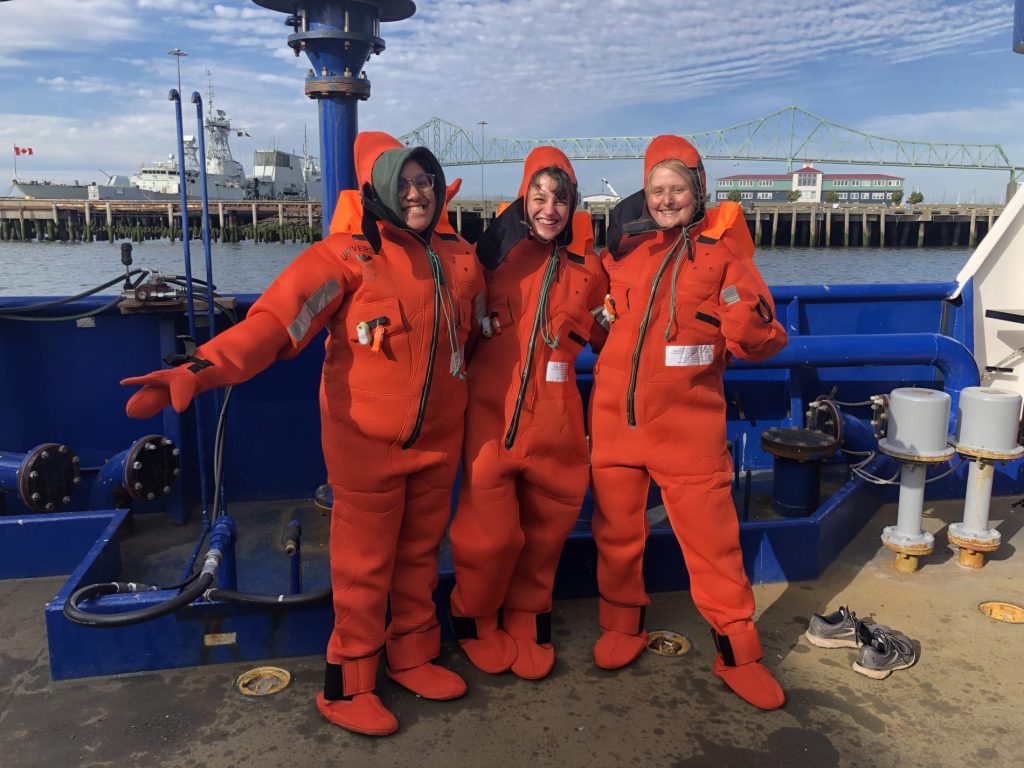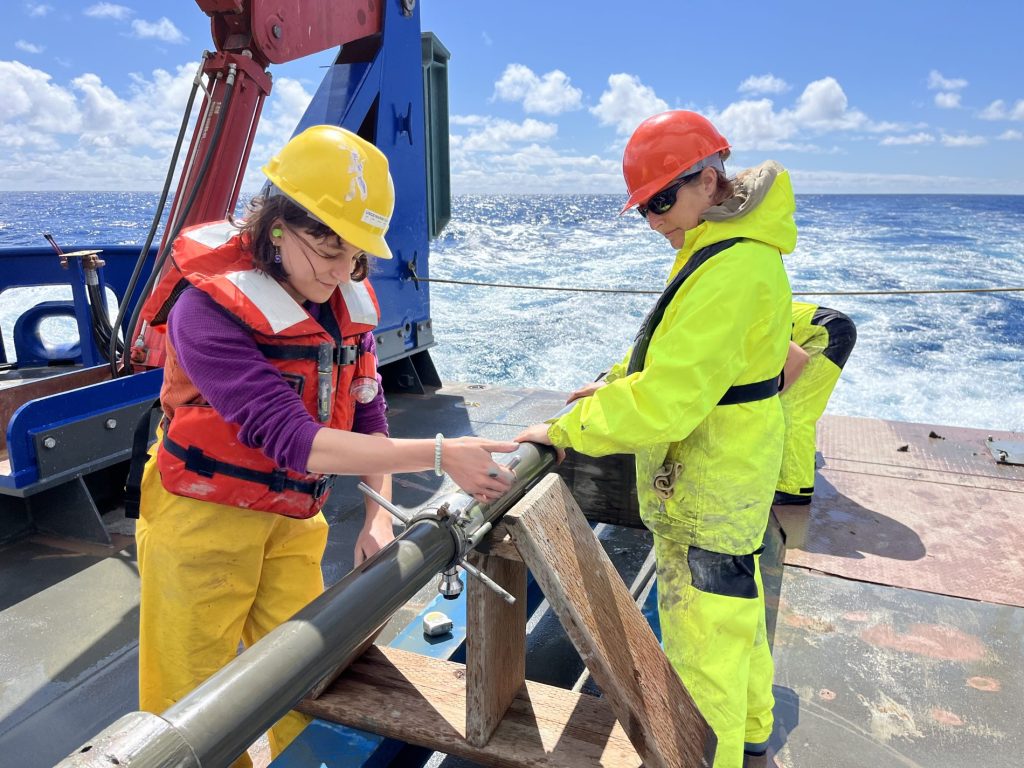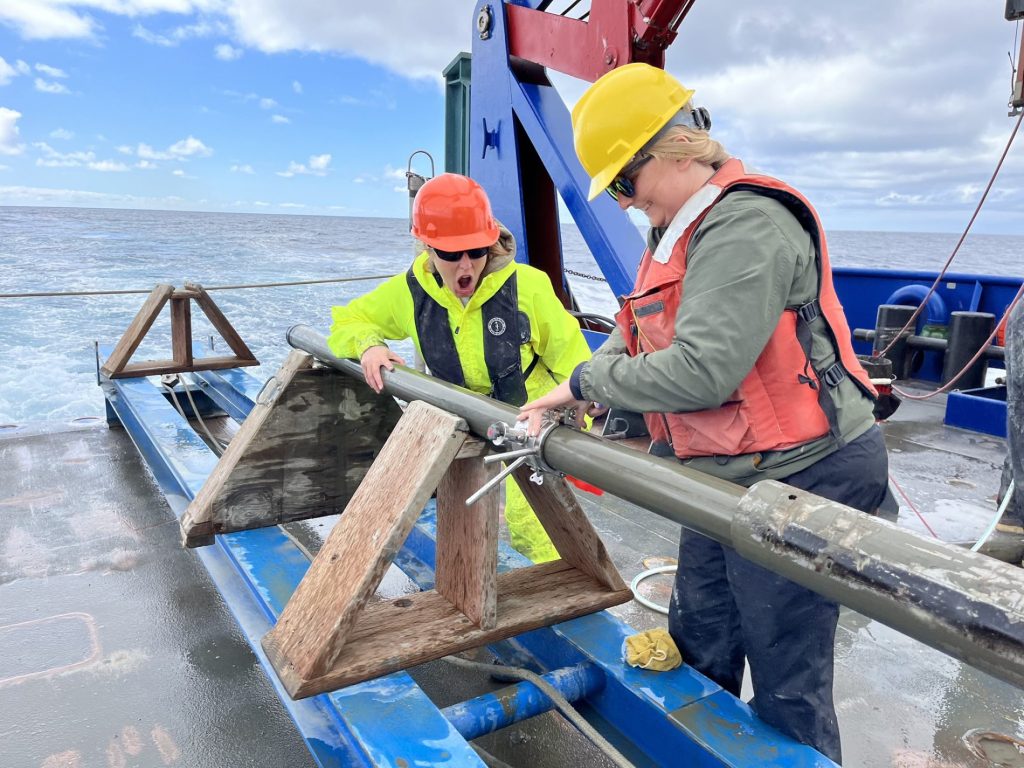ESS Graduate Students Anna Ledeczi and Madeleine Lucas joined the United States Geological Survey (USGS) aboard the Swift Responder to collect sediment cores from the Cascadia Subduction Zone in an area offshore Washington State.
Anna and Madeleine were excited to be at their “field site”, even though the rocks and sediments they have been studying with seismic images for their PhDs are thousands of meters below sea level. For the first time, thanks to the cores, they were finally able to see the sediments from there.
- Anna Ledeczi cutting sediment cores into pieces after coming up from the seafloor.
- Madeleine Lucas cutting sediment cores from the seafloor.
The cores are collected around the clock, with scientists working in 12 hour shifts. Anna and Madeleine, working the night shift from midnight to noon, were in charge of processing the cores that the USGS marine technicians bring up from the deep and onto the ship deck. This included cutting the cores into manageable increments for cold storage on the boat and shipment to the lab.
The expedition, led by Jenna Hill and Janet Watt from the USGS Pacific Coastal & Marine Science Center, targeted cores from the abyssal turbidite record. Turbidites, sediment layers deposited by underwater debris flows that cascade along the seafloor, are thought to be triggered by strong shaking and can represent previous large earthquakes that occurred in the Cascadia Subduction zone. These sediment layers can be used to learn more about the frequency and size of earthquakes further back in time (10,000 years) than the instrumental record can reach (200 years).


